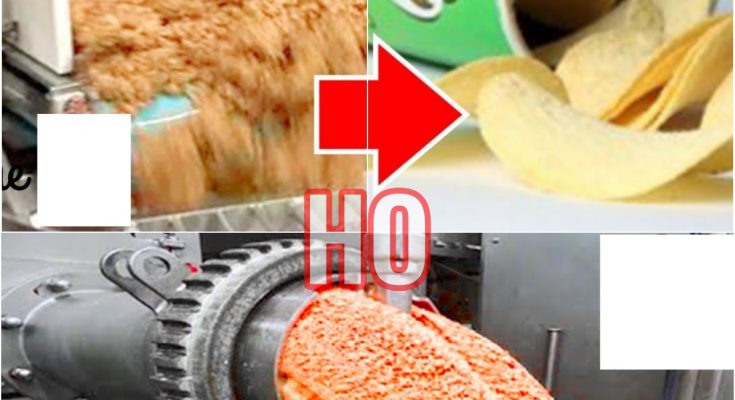
In today’s fast-paced world, convenience often comes at the expense of quality. We rarely stop to consider what’s inside the foods we eat or how they’re made. However, once you know the truth behind some popular products, you may think twice before consuming them again. Here are 10 foods you’ll never want to buy again after learning how they’re made.
1. Hotdogs
Hotdogs are a classic favorite, but their production is anything but appetizing. They start with the leftover meat from pork and beef after butchers take the best cuts. This meat is then ground into a paste, mixed with processed chicken trimmings, and liquefied into a slurry. Additional ingredients like starch, salt, and spices are blended into the mixture before it’s pumped into casings and smoked. The result is a sausage that’s far removed from the wholesome image of a hearty meal.
2. Chewing Gum
Chewing gum might seem harmless, but its chewy texture comes from synthetic substances like plastics and rubbers. The gum base, once derived from tree resin, is now often made from synthetic polymers. Sweeteners, flavors, and colors are added to the mix, but the core ingredient remains unnatural. While swallowing gum might not harm you, knowing that it’s derived from materials used in industrial products can be unsettling.
3. Blue Cheese
Blue cheese owes its distinctive flavor and blue veins to mold. While the mold used in blue cheese is harmless, the concept of intentionally cultivating mold to create a food product can be off-putting to many. The cheese is pierced with rods to allow air in, encouraging mold growth. Despite its pungent aroma and appearance, blue cheese remains a favorite for some, though others may never touch it after understanding how it’s made.
4. Yogurt
Yogurt is often praised as a healthy snack, but it’s made using bacteria. Milk is pasteurized to kill harmful bacteria, and then “good” bacteria are added to ferment the milk. These bacteria metabolize lactose, turning it into the creamy product we recognize. While these bacteria are safe and even beneficial, the idea of consuming live cultures might make some people uneasy.
5. Bacon
Traditionally, bacon is made by curing pork belly with salt and spices, but modern mass production involves injecting the meat with salty water and chemicals like sodium nitrate and ascorbic acid. These additives enhance flavor and weight, but they turn a natural food into a chemical-laden product. The thought of eating bacon injected with preservatives and chemicals might make you reconsider your breakfast choices.

6. Gummy Bears
Most gummy candies, including gummy bears, are made with gelatin—a substance derived from the skin and bones of animals. Animal remains are boiled down to extract collagen, which is then processed into gelatin. This ingredient gives gummies their chewy texture. While vegan alternatives exist, the origins of traditional gummies can be shocking, especially for vegetarians or those concerned about animal welfare.
7. Breakfast Sandwiches
Fast-food breakfast sandwiches might seem like a convenient meal, but their ingredients are far from wholesome. Common additives include propylene glycol (used in antifreeze), glycerin (found in soaps), and TBHQ (a preservative also used in perfumes). These chemical ingredients enhance shelf life and flavor but raise serious questions about their safety in food.
8. French Fries
French fries seem simple, but McDonald’s fries, for example, contain 19 ingredients, including dimethylpolysiloxane (an anti-foaming agent also used in Silly Putty) and natural beef flavoring. For vegetarians, the inclusion of beef tallow during pre-cooking can be a dealbreaker. Furthermore, fries from certain fast-food chains have been known to remain unchanged for years, raising concerns about what we’re really eating.
9. Tomato Sauce
Tomato sauce is a pantry staple, but did you know it often contains fly eggs and maggots? According to FDA regulations, small amounts of these are permissible in canned tomatoes and sauces. While these contaminants are unavoidable during mass production, the idea of consuming insect parts unknowingly is enough to put anyone off their pasta.
10. Hamburgers
Fast-food hamburgers may seem normal, but their long shelf life is unnerving. A famous example is a McDonald’s hamburger that remained unchanged after 14 years. The lack of moisture and preservatives prevents bacteria and mold from growing, but it also means the product is far removed from fresh, natural food.
Understanding how these foods are made can drastically change your perspective on what you eat. While some people might continue enjoying these products despite the unsettling details, others may seek healthier and more natural alternatives. Knowing the truth empowers you to make better choices for yourself and your family. Which of these foods surprised you the most? Share your thoughts in the comments below!



